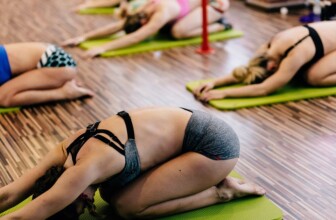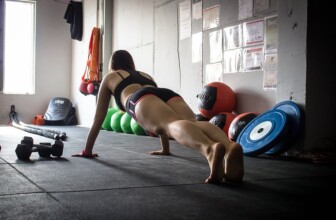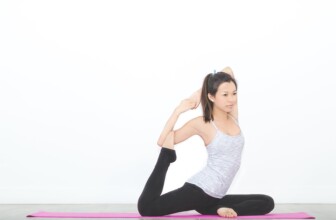10 Effective Strategies for Instant Anxiety Relief
Anxiety is a common emotional response that many individuals experience at various points in their lives. While anxiety can be a normal part of life, chronic anxiety can significantly affect daily functioning and well-being. Fortunately, there are numerous methods for relieving anxiety that can be utilized in different situations. This article presents ten effective strategies for instant anxiety relief, each backed by research and real-life examples.
Table of Contents
- Understanding Anxiety
- Breathing Techniques
- Mindfulness and Meditation
- Physical Activity
- Nutrition and Supplements
- Cognitive Behavioral Techniques
- Social Support
- Creative Outlets
- Questions and Answers
- Resources
- Conclusion
- Disclaimer
1. Understanding Anxiety
Anxiety can manifest through various symptoms, including excessive worry, rapid heartbeat, sweating, and avoidance behaviors. Understanding the physical and emotional pathways of anxiety is crucial for effective relief.
What Causes Anxiety?
Anxiety can arise from several factors:
- Genetics: Family history can predispose individuals to anxiety disorders.
- Environment: Stressful life events or environments can trigger anxiety.
- Brain Chemistry: Neurotransmitter imbalances may contribute to anxiety.
Types of Anxiety Disorders
Understanding the type of anxiety one is experiencing—such as Generalized Anxiety Disorder (GAD), Social Anxiety Disorder, or Panic Disorder—can guide the selection of effective relief techniques.
2. Breathing Techniques
One of the simplest yet most powerful ways to combat anxiety involves focusing on the breath.
Deep Breathing
Technique:
- Sit or lie down in a comfortable position.
- Inhale deeply through the nose for a count of four.
- Hold the breath for a count of four.
- Exhale slowly through the mouth for a count of six.
Example:
A case study from a therapy session demonstrated that clients who practiced deep breathing techniques reported reduced anxiety symptoms during stressful situations, such as public speaking.
Benefits of Breathing Techniques
Deep breathing lowers heart rate, reduces blood pressure, and prompts the body’s relaxation response, making it an easily accessible strategy for anxiety relief.
3. Mindfulness and Meditation
Mindfulness involves being present in the moment and can help reduce anxiety by shifting focus away from worry and stress.
How to Practice Mindfulness
Engaging in mindfulness can be as simple as:
- Mindful Walking: Focus on each footstep, the sensation of the ground beneath you, and your surroundings.
- Guided Meditation: Utilize apps or online resources for guided sessions.
Real-Life Example:
Individuals who committed to a daily 10-minute mindfulness meditation reported significant reductions in anxiety levels after eight weeks.
Scientific Support
Research indicates that mindfulness can change brain structures associated with anxiety, enhancing emotional regulation and reducing reactivity.
4. Physical Activity
Engaging in physical activity is a highly effective way to alleviate anxiety.
Types of Exercise
- Cardio: Activities like running, cycling, or swimming can boost endorphins and improve mood.
- Yoga: Combines physical movement, breathing techniques, and meditation.
Case Study:
Participants in a study who engaged in regular cardio workouts reported reduced anxiety levels compared to those who remained sedentary.
Why Exercise Works
Exercise releases neurotransmitters like serotonin and dopamine, which enhance mood and decrease feelings of anxiety.
5. Nutrition and Supplements
What we eat can influence our mental health profoundly.
Foods That Combat Anxiety
- Omega-3 Fatty Acids: Found in fish, walnuts, and flaxseeds, these fats are known to reduce anxiety.
- Magnesium-Rich Foods: Spinach, nuts, and beans may help in managing anxiety symptoms.
Supplements
Some people find relief through:
- L-theanine: An amino acid found in tea that promotes relaxation.
- B Vitamins: Essential for brain health and mood regulation.
Example:
A 2019 study suggested that individuals who incorporated omega-3 supplements into their diet experienced decreased anxiety symptoms within three months.
6. Cognitive Behavioral Techniques
Cognitive Behavioral Therapy (CBT) techniques can be applied even outside of therapy settings for immediate anxiety relief.
Strategies to Try
- Thought Journaling: Write down anxious thoughts to identify patterns and challenge negative beliefs.
- Exposure Therapy: Gradually face anxiety-producing situations, starting with less intimidating scenarios.
Real-Life Application:
An individual facing social anxiety put these techniques into practice by addressing small social interactions—leading to increased confidence over time.
7. Social Support
Human interaction can be a powerful tool for reducing anxiety.
Methods to Engage Social Support
- Talk to Friends or Family: Sharing feelings can provide relief and perspective.
- Participate in Support Groups: Connecting with others who understand can help validate feelings and offer strategies.
Case Study:
Participants who regularly engaged in social activities reported lower anxiety levels, attributing their relief to the connections formed with others.
8. Creative Outlets
Engaging in creative activities can distract from anxiety and promote emotional expression.
Types of Creative Activities
- Art Therapy: Drawing or painting can allow individuals to communicate feelings without words.
- Writing: Journaling or creative writing can provide an outlet for self-expression.
Example:
A client who began painting as an outlet reported reduced episodes of anxiety as they focused on their artwork.
9. Questions and Answers
What are quick techniques for instant anxiety relief?
Quick techniques include deep breathing, grounding exercises, and engaging in mindfulness for immediate relief.
How often should one practice these techniques?
Daily practice, even for a short period, can strengthen coping tools and lower anxiety over time.
Can these strategies replace professional help?
While they can be helpful, these strategies should complement professional treatment rather than replace it.
10. Resources
| Source | Description | Link |
|---|---|---|
| American Psychological Association | Provides resources on anxiety management. | APA Resources |
| National Institute of Mental Health | Research-based information on mental health topics. | NIMH |
| Mindful.org | Offers articles and resources on mindfulness. | Mindful |
| Anxiety and Depression Association of America | Support group information and guidance. | ADAA |
| Headspace | Guided meditation app for managing stress. | Headspace |
Conclusion
In summary, anxiety can be effectively managed through a variety of strategies. From breathing techniques and mindfulness to social support and nutrition, it's essential to find methods that work individually. Engaging in physical activity and creative outlets also provides avenues for relief that can facilitate quicker recovery from anxious episodes.
Focusing on these strategies not only offers immediate relief but can contribute to long-term mental health resilience. As the field of mental health continues to evolve, future trends may involve integrating technology and personalized care to assist those struggling with anxiety.
Disclaimer
The information provided in this article is for educational purposes only and should not be considered a substitute for professional medical advice or treatment. Always seek the advice of your physician or other qualified health provider with any questions you may have regarding a medical condition.
This article serves as a comprehensive guide to understanding and managing anxiety with effective strategies for instant relief. Each section aims to provide you with practical applications, real-life examples, and supportive resources. The journey toward anxiety management is personal and varies for everyone; thus, it’s vital to explore these strategies and determine what resonates best with you.










